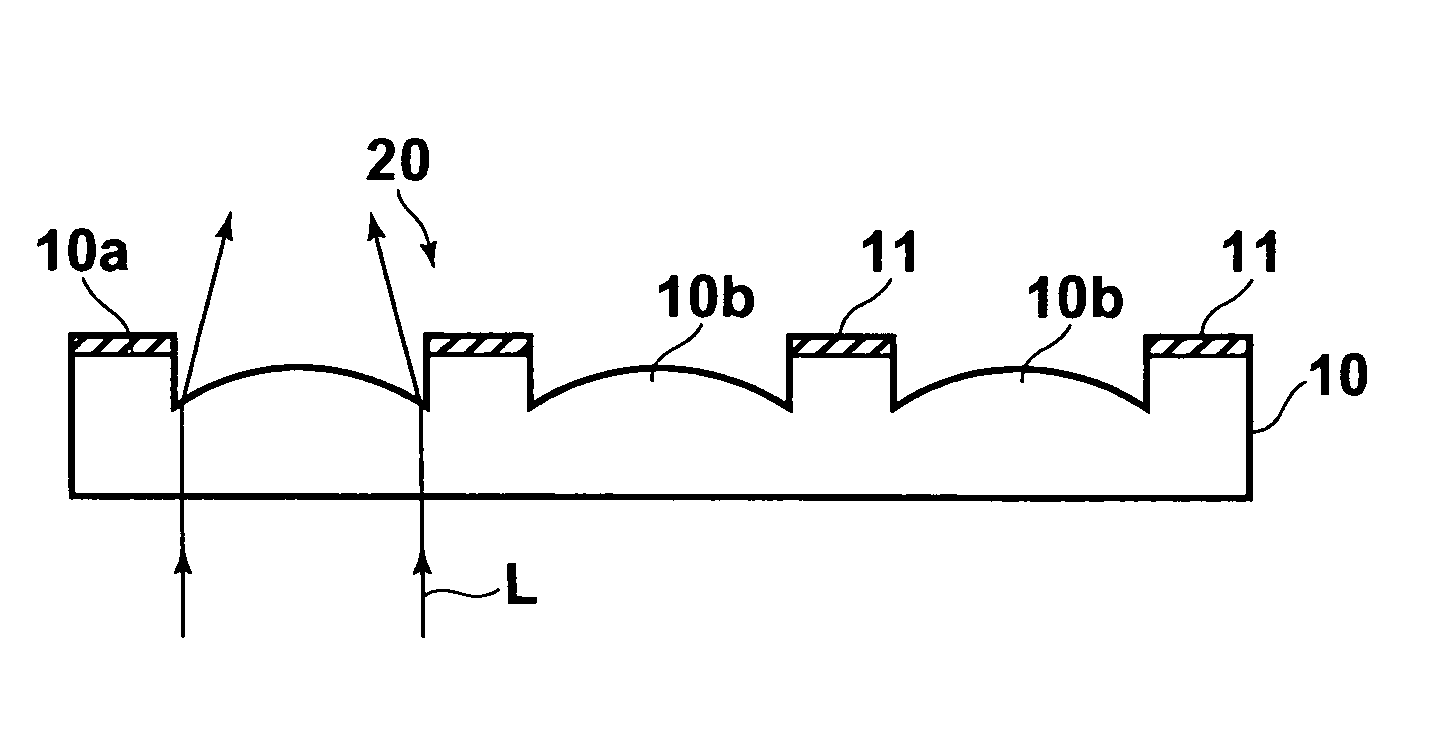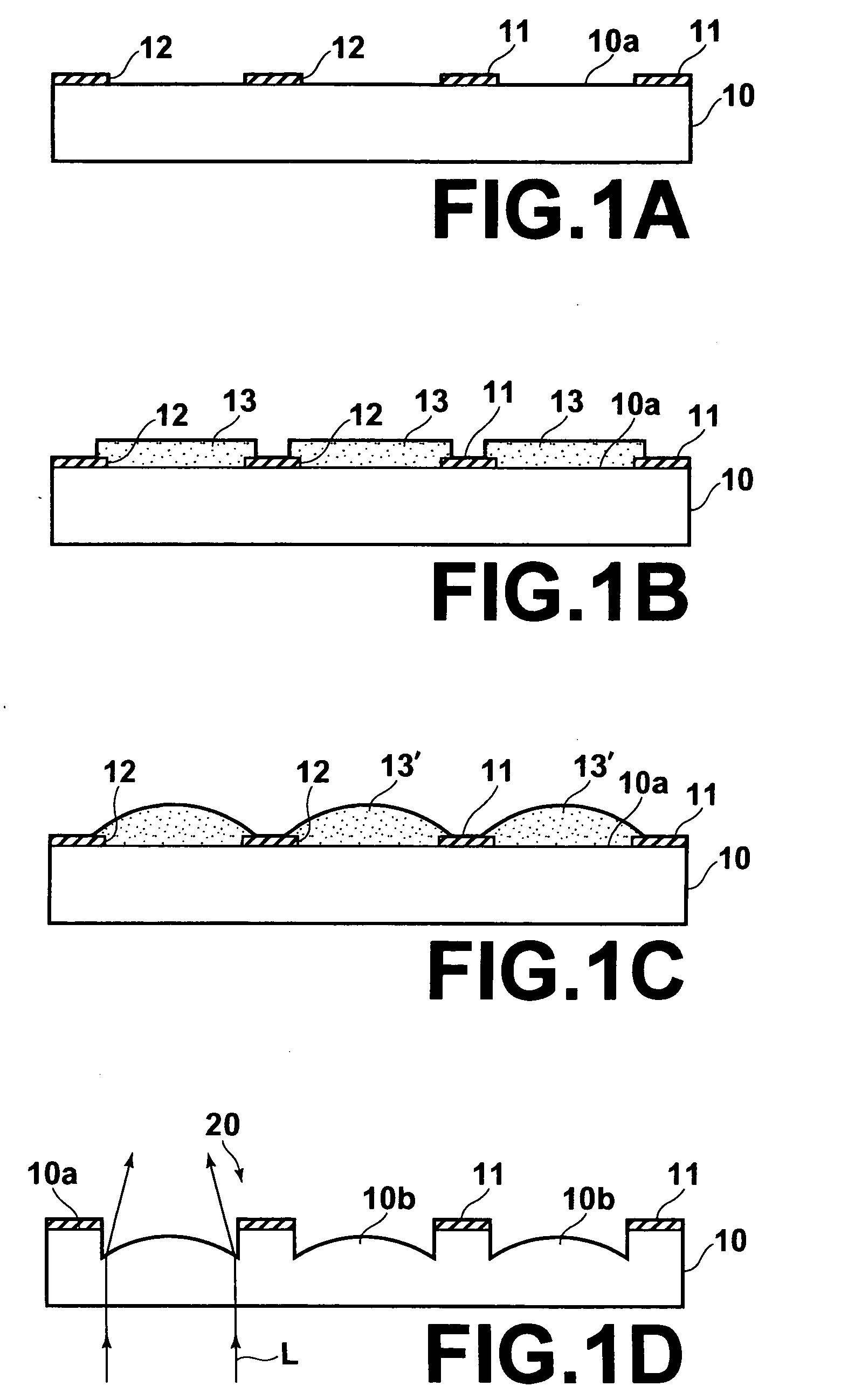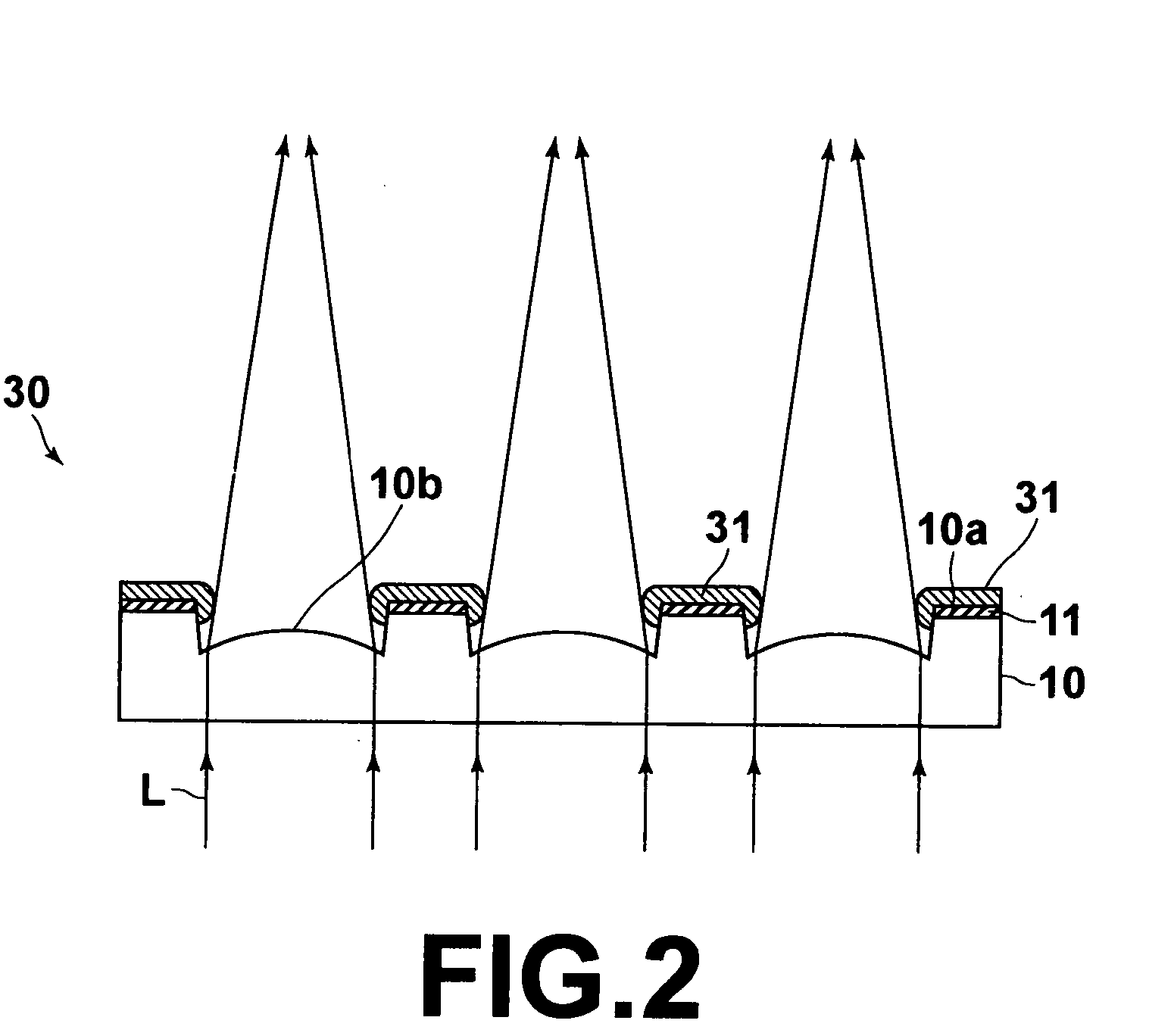Micro lens array, optical member and method of producing micro lens array
- Summary
- Abstract
- Description
- Claims
- Application Information
AI Technical Summary
Benefits of technology
Problems solved by technology
Method used
Image
Examples
Embodiment Construction
[0030] As shown in FIG. 1A, a light-shielding metal is first sputtered on a surface 10a of a transparent substrate 10, which may comprise, for instance, SiO2 glass, to form metal film 11 and a number of openings 12 are formed in the metal film 11 by usual photolithography. The metal film 11 is formed, for instance, by Cr, and the thickness thereof is about 50 to 200 nm. Further, the openings 12 are formed in the metal film 11 so that the openings 12 correspond to the pattern of a plurality of micro lenses to be produced in an array.
[0031] Then positive photoresist 13 is applied on the metal film 11 and photoresist 13 is remained in a shape corresponding to the shape of the micro lens by exposing the photoresist 13 to light through a photo mask having a pattern of openings which determine the shape of lenses and developing the same as shown FIG. 1B.
[0032] The photoresist 13 thus remained is larger than the opening 12 of the metal film 11. Further, by attaching an alignment mark on ...
PUM
 Login to View More
Login to View More Abstract
Description
Claims
Application Information
 Login to View More
Login to View More - R&D
- Intellectual Property
- Life Sciences
- Materials
- Tech Scout
- Unparalleled Data Quality
- Higher Quality Content
- 60% Fewer Hallucinations
Browse by: Latest US Patents, China's latest patents, Technical Efficacy Thesaurus, Application Domain, Technology Topic, Popular Technical Reports.
© 2025 PatSnap. All rights reserved.Legal|Privacy policy|Modern Slavery Act Transparency Statement|Sitemap|About US| Contact US: help@patsnap.com



